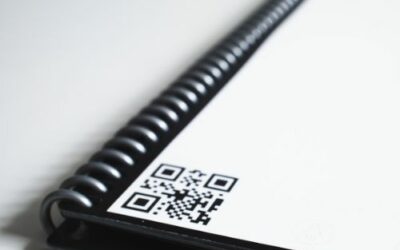Accurate asset auditing is one of the many benefits of a fixed asset register. But why do you need to audit your business assets?
Well, regulatory compliance is one thing. But did you know auditing has some other, much more significant benefits for your business? Accurate auditing involves keeping an accurate track record of your fixed assets, which itself holds a lot of value.
Furthermore, auditing can save you plenty of money by letting you avoid unexpected maintenance costs, damage incurred by using outdated assets and unnecessary taxes. And there’s more! Internal audit procedures boost productivity, make you more organised, and increase accountability in the workplace.
That said, if you want to learn how to use a fixed asset register for audits, this short guide is for you. We’ve prepared a step-by-step guide that’ll walk you through the auditing process.
Step 1: Keeping an Up-to-date Asset Register
An accurate and comprehensive asset database forms the foundation for a successful audit. A well-kept asset register is the first thing you need and preparing is not a one-off thing. This involves recording asset details for all your fixed assets consistently over a period of time.
You need to record all or most of the below-mentioned details for every fixed asset:
- Vendor: The company you purchased the assets from
- Purchase date
- Purchase cost
- Effective Lifetime
- Serial Number: important for warranty information
- Warranty expiration date
- Depreciation particulars
- Particulars regarding sale, or discarding assets
- Details of fixed assets retired from use and held for disposal
You should have all your fixed assets listed on the register and their details updated as frequently as they change. You can utilise asset tags to make the asset tracking process simpler and quicker.
If you already have a well-developed and up-to-date fixed asset register, you’re ready to move on to the next step. You can export configurable reports directly from your fixed asset register that makes the auditing process much easier.
Step 2: Verification of Records
When you have the asset details in front of you in a report, chances are there might be minor fallacies in the information. Although using an advanced fixed asset register reduces errors to the bare minimum, the risk of human error is still there.
Step 3: Accounting Process
This is where the numbers game kicks in. Financial information like purchase dates, costs, tax and depreciation details should ideally harmonise between company balance sheets and the asset register. The accounting process also includes the physical verification of assets.
Physical verification is the best part because this is where you’ll be busting ghost assets and bringing zombie assets back to life. The auditing procedure gives you the opportunity to physically verify each and every asset on your fixed asset register for its existence and the condition that it’s in.
If a fixed asset is recorded on the register but you can’t find it anywhere in the office or worksites, that asset might be a ghost asset. In the same way, if you find an asset that does not exist on the register, it’s a zombie asset. Furthermore, you also have to evaluate each fixed asset for the condition it’s in.
Condition evaluation enables you to identify whether or not an asset is in need of maintenance, or if it’ll be retired soon. This brings us to the next step in the auditing process: calculating depreciation.
Step 4: Calculating Depreciation
Your fixed assets lose value over time. This phenomenon is known as fixed asset depreciation. Calculating depreciation over an asset’s life cycle and reporting updated values for tax and insurance purposes is a crucial financial process.
Fixed asset depreciation can be calculated by using depreciation methods like WDV (written down value), straight-line or units of production method. Once you’ve calculated depreciated asset values, don’t forget to record them in the fixed asset register and report updated values for tax and insurance so the company can save money wherever possible.
Step 5: Valuation and Disclosure
This is the last step in the audit procedure. Once you’ve finalised the audit reports, identified ghost assets, calculated depreciation and confirmed your business assets’ valuation, you have to make sure everything falls in line with regulatory requirements. Take your time to set things straight in case there’s an anomaly.
The Right Fixed Asset Register For Robust Audits
itemit’s fixed asset register software empowers you to set up a comprehensive asset register in a few simple steps. Adding and updating asset information with itemit is as easy as it gets.
Apart from configurable reports for easy auditing, itemit brings a great range of features, scalability and shareability. So feel free to use the system the way you want. For instance, if you need tools tracking software or equipment checkout software, itemit is your all-in-one solution.
To find out more about how itemit can help your business you can fill in the form below to start your 14-day free trial. You can also contact the team at team@itemit.com.
Fixed Asset Register For Audits
Choose a better way to track your assets
Start your free 14-day trial now
Instant access. No credit card details required.
Related articles
5 Benefits Of Fixed Asset Management
What are the benefits of fixed asset management? Can using a fixed asset register make all the difference to your business? Read this post to find out!
The Best Way To Utilise Asset Management For Small Businesses
What is the best way to utilise fixed asset register management for a small business? Read our latest post now to find out!
Why You Should Manage Your Assets with QR codes
QR codes may be small in size but can be incredibly transformative to your operations. Discover why you should consider QR codes for your asset management.




